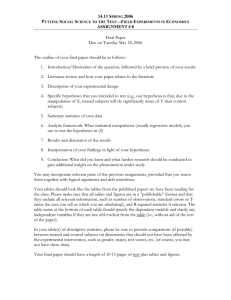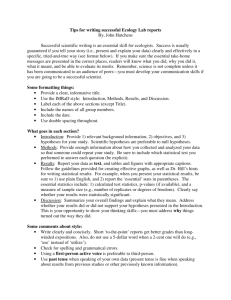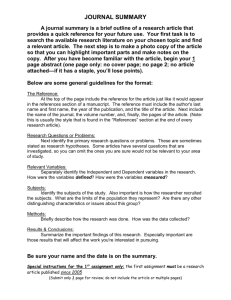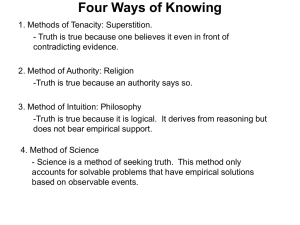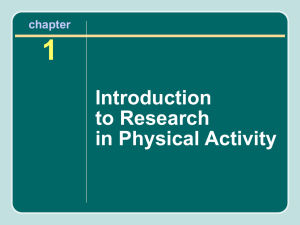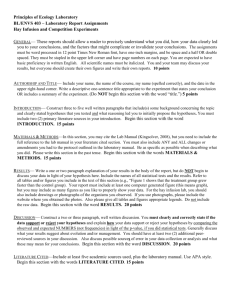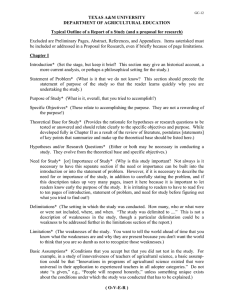Research Basics
advertisement
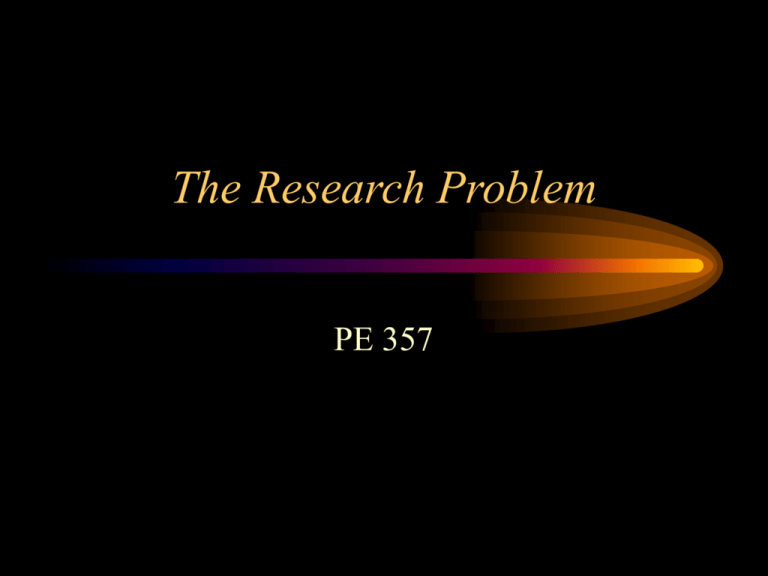
The Research Problem PE 357 Selecting the problem • Can be for research or a literature review - To break the problem down more … - needs to be of interest to you can ask professors go with your own hunches read text books Once the basic problem is defined.. • You need to do a literature search for background information • Search conceptual literature – written material by experts or authorities • Search related research – studies to learn what is known on the subject Does the problem need further study? • 1) Is it still interesting? • 2) is it worthwhile? • 3) is it manageable? • Best way to do research is to develop an outline A research proposal consists of three chapters • 1) Introduction • 2) Review of Literature • 3) Methodology Title • often the last decision • takes crafting – can’t be too long but also needs to be long enough to get the content across General rules for titles · 1) Keep it clear and descriptive for indexing • 2) Identify key variables and scope – (I.e., does the title precisely identify the problem • 3) Avoid unnecessary phrases: “effect of”, “relationship between”, “analysis of”, “a review of” Introducing the problem • leader paragraphs • hour glass approach • specify the problem • provide rationale (why is it important?) Introducing the Problem Cont... • use broad references but leave the literature review to the literature review section • the introduction can be quite short • provide the purpose (why) and problem (what) statement • watch the term “the study investigated…” Developing the hypotheses • Expected results based on theory or experience • Stated as outcomes • Null hypotheses – No significant differences or relationships – Used for statistical tests More on Hypotheses • 1) should be based on theory or previous findings • 2) should state a relationship between at least two variables • 3) simple statement • 4) can be tested • 5) can be refuted • 6) related to design, procedures, and statistical technique Writing the Introduction • Omit technical jargon. • Know who you are writing for. • Write introduction after the problem, purpose, and hypotheses. • Catch the reader’s attention! significance of the study (I.e., why?) - knowledge gaps more and better knowledge is needed present knowledge needs validation present knowledge needs clarification solution to the problem needs to be found Define • Independent variables (IV) • Dependent variables (DV) • Extraneous variables (EV) Making Your Problem and Hypotheses Clear • Operational definitions – Key terms with specific meaning • Assumptions • Limitations – Possible shortcomings • Delimitations – Characteristics imposed by the researcher Examples of limitations • • • • • Research design sampling problems uncontrolled variables faulty independent variables faulty dependent variables How do we control for Extraneous Variables? • Random Selection • Matching • Removal • Statistical Control
